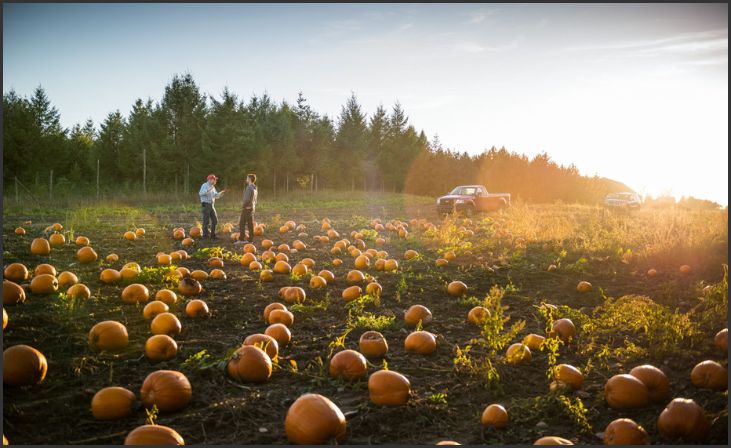As the air turns crisp and leaves begin to rustle with the promise of autumn, there’s one iconic image that comes to mind – pumpkins! These vibrant orange orbs have become synonymous with fall, adorning front porches, inspiring spooky jack-o’-lanterns, and filling kitchens with the aroma of pumpkin pies. If you’ve ever dreamt of cultivating your own plump pumpkins, now is the perfect time to turn that dream into reality.
In this comprehensive guide, we’ll walk you through a pumpkin-growing tips, offering invaluable tips and tricks that will help you nurture your pumpkin patch from tiny seeds to robust fruits. Whether you’re a gardening novice or a seasoned pro, get ready to embark on a journey of growth, learning, and the ultimate autumn harvest.
Top Pumpkin Growing Tips
1. Selecting the Right Variety

When selecting the right pumpkin variety, consider your preferences and space constraints. Opt for reputable suppliers offering diverse options. Choose a variety that suits your taste, whether it’s a classic orange pumpkin or a unique heirloom. Additionally, factor in the available space in your garden to ensure the selected variety can thrive and spread comfortably.
2. Prep Your Soil
Prepare your soil for optimal pumpkin growth by testing pH levels and fertility. Enhance it with nutrient-rich compost, ensuring well-drained conditions. This sets the foundation for a thriving pumpkin patch. Amend the soil to create a nourishing environment, providing the essential elements for healthy seed germination and robust plant development.
3. Sunshine is Key
Sunshine is crucial for successful pumpkin cultivation. Choose a sunny location for your patch, as pumpkins thrive in full sunlight. Ensure your plants receive at least 6-8 hours of direct sunlight daily. Adequate sunshine promotes robust growth, vibrant foliage, and enhances the development of healthy, flourishing pumpkins.
Read Also: Enchanting Pumpkin-Themed Wedding Decor Ideas
4. Spacing Matters
Proper spacing is vital for thriving pumpkins. Allow 3 to 5 feet between plants to provide ample room for spreading vines. This prevents overcrowding, allowing each pumpkin to receive adequate sunlight and air circulation. Optimal spacing reduces the risk of diseases and ensures each plant has the space it needs to produce healthy, sizable pumpkins.
5. Planting Techniques
Master planting techniques for successful pumpkin growth. Begin by germinating seeds indoors, using biodegradable pots for easy transplanting. Ensure a warm environment for germination, and transplant seedlings outdoors when frost risk has passed. Handle seedlings with care, protecting them from harsh weather conditions. By following these planting steps, you set the stage for robust pumpkin development in your garden.
6. Water Wisely

Water your pumpkins wisely for optimal growth. Focus on watering at the base of the plants to keep foliage dry and prevent diseases. Maintain consistent soil moisture, adjusting frequency based on weather conditions. Avoid overwatering, as this can lead to root rot, and underwatering, which stunts growth. By watering wisely, you provide the essential hydration for healthy pumpkin development.
7. Mulch Magic
Unlock the magic of mulching for thriving pumpkins. Apply a layer of organic mulch around plants to retain soil moisture, suppress weeds, and regulate temperature. Mulching also prevents soil compaction and erosion, creating an ideal environment for pumpkin roots. Choose materials like straw or shredded leaves and replenish the mulch as needed. This simple technique enhances the overall health and productivity of your pumpkin patch.
8. Support for Success
Provide sturdy support for successful pumpkin growth. As your pumpkins mature, use slings made from old fabric or pantyhose to cradle heavy fruits. This prevents stress on vines, reducing the risk of breakage. Supporting your pumpkins ensures they develop uniformly, enhancing their overall quality and preventing damage. Invest in reliable support methods to guarantee a bountiful and successful pumpkin harvest.
9. Fertilization Facts
Master fertilization for thriving pumpkins. Choose a balanced fertilizer rich in potassium and phosphorus, crucial for fruit development. Begin fertilizing when vines appear and continue throughout the growing season, following recommended rates. This ensures your pumpkins receive the essential nutrients for robust growth and abundant harvest. Strike the right balance, and your pumpkins will thank you with healthy vines and plump, vibrant fruits.
10. Pest and Disease Patrol
Maintain a vigilant pest and disease patrol for flourishing pumpkins. Regularly inspect plants for common pests like aphids and squash bugs. Employ organic remedies such as neem oil or insecticidal soap to deter invaders. Implement preventative measures, including crop rotation and proper spacing, to minimize the risk of diseases. By staying proactive, you’ll ensure your pumpkin patch remains healthy and pest-free, yielding a bumper crop of vibrant pumpkins.
11. Harvesting Happiness

Experience harvesting happiness with these essential tips. Identify ripe pumpkins by checking for uniform color, a hard rind, and a fully developed stem. Use sharp tools, like a knife or pruning shears, to harvest, leaving a few inches of stem attached. Enjoy the satisfaction of plucking your pumpkins at their peak, ready to be showcased in your garden or transformed into delightful seasonal creations.
Read Also: Organic Pumpkin Farming Practices
Conclusion
Growing your own pumpkins is a delightful way to embrace the spirit of autumn and enjoy the fruits of your labor. By following these pumpkin growing tips, you’ll be well on your way to nurturing healthy vines that produce vibrant, plump pumpkins that can be transformed into delicious pies, captivating decorations, and cherished memories. So roll up your sleeves, get your hands dirty, and let the magic of pumpkin cultivation unfold in your garden this season!
FAQ
Yes, you can grow smaller pumpkin varieties in large containers. Ensure the containers have proper drainage and provide support for the vines.
To prevent powdery mildew, water your plants at the base, apply fungicides if necessary, and provide adequate spacing for air circulation.
Start pumpkin seeds indoors 2 to 4 weeks before the last expected frost date. Transplant outdoors when soil temperatures are consistently above 60°F (15°C).
While not all pumpkins are suitable for eating, many varieties are delicious in recipes. Look for “pie pumpkins” or those labeled for culinary use.

